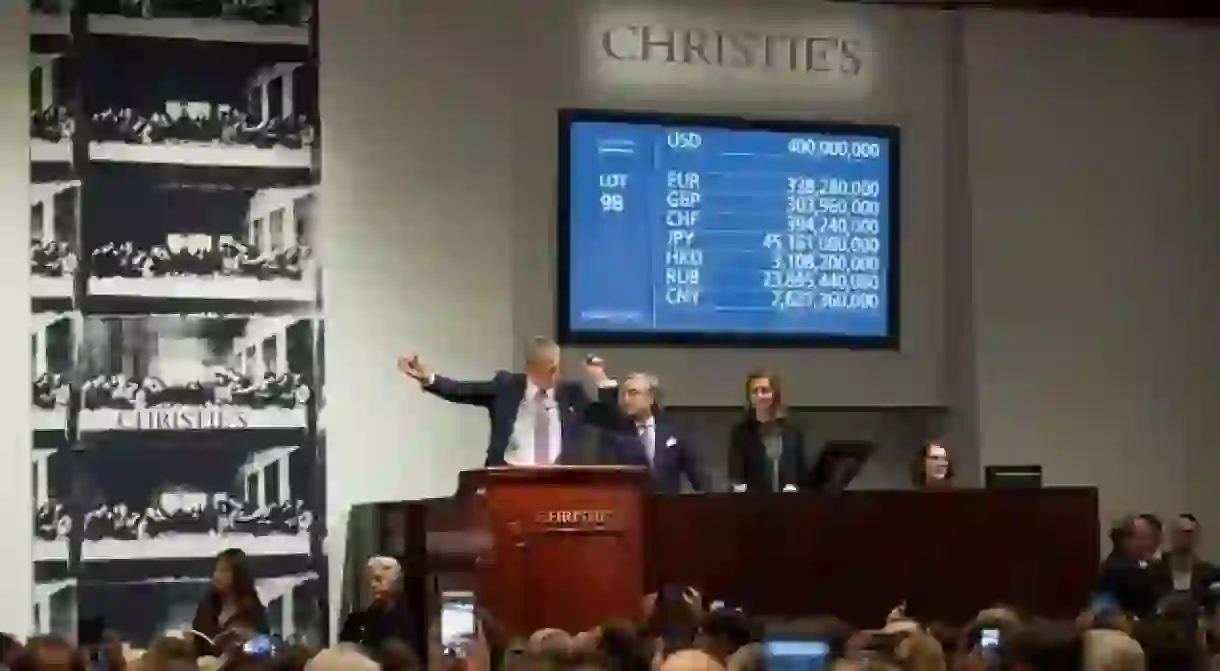The Mystery Buyer of 'Salvator Mundi' Is Revealed

Salvator Mundi shook the art market (and beyond) when an anonymous buyer purchased the painting, attributed to Leonardo da Vinci, for a practically inconceivable $450.3 million. Experts have since debated the legitimacy of the artwork’s provenance and what the sale means for the industry, but the burning question has been: who actually bought it?
On December 6, it was initially revealed that Saudi prince Bader bin Abdullah bin Mohammed bin Farhan al-Saud is the mystery buyer of Salvator Mundi (ca. 1500).

“He is a little-known Saudi prince from a remote branch of the royal family, with no history as a major art collector, and no publicly known source of great wealth,” reported The New York Times, who investigated the story and broke the news. But “the revelation thatPrince Bader is the purchaser…links one of the most captivating mysteries of the art world with palace intrigues in Saudi Arabia that are shaking the region.”
While the buyer was still anonymous, critics weighed in on who could have made such a purchase, and perhaps more importantly, why. A number of industry insiders expressed their doubts regarding the painting’s attribution to Leonardo da Vinci, simultaneously noting the exceptional price tag for an artwork that, despite top conservationists’ best efforts, was still in rather poor shape by the time it hit the auction block.
So the fact that Salvator Mundi became the most expensive artwork ever sold in history is especially peculiar. It was all too easy, then, to conclude that whoever bought it must have done so exclusively for bragging rights; but it seems that the purchase launched the next strange phase of Salvator Mundi‘s journey: as a pawn in a geopolitical conflict.
Prince Bader purchased “this controversial and decidedly un-Islamic portrait of Christ at a time when most members of the Saudi elite, including some in the royal family, are cowering under a sweeping crackdown against corruption and self-enrichment,” the Times reported. And it’s no coincidence that he shares a close working relationship with Prince Mohammed bin Salman, Saudi Arabia’s ascendant ruler. Prince Mohammed stands at the helm of this regional reform, pushing for a “more moderate Islam” in a Sunni-majority nation with a strict interpretation of Islamic law—to include iconoclasm.
Salvator Mundi is a prime example of a forbidden image. “Considering that Jesus is considered a Muslim prophet and precursor to Mohammed, a painting of him would certainly be seen as unholy,” explains artnet News. “Throw into the mix that many view Leonardo da Vinci as the greatest artist of all time, making his portrait of Jesus the most graven image in that genre.”
Prince Mohammed’s supporters will then see his connection to the purchase as an act of religious reformation; yet a principal element of his initiative also targets greed and corruption. By his own accounts, Prince Bader’s headlining splurge contradicts the nature of his vehement initiative. “The $450.3 million purchase is the clearest indication yet of the selective nature of the crackdown,” the Times points out.
Only hours before the Times article unmasking Prince Bader was published, the Louvre Abu Dhabi tweeted: “Da Vinci’s Salvator Mundi is coming to #LouvreAbuDhabi.” The museum didn’t specify when it will go on view or whether the painting is a loan or an acquisition, but its forthcoming exhibition in the UAE is surely no coincidence.
On Thursday, December 7, the Wall Street Journal reported that Prince Bader was only a proxy, and that the painting’s real owner is Prince Mohammed. To make the circumstances of Salvator Mundi‘s purchase even more confusing, the Louvre Abu Dhabi tweeted on December 8: “Louvre Abu Dhabi is looking forward to displaying the Salvator Mundi by Leonardo Da Vinci. The work was acquired by the Department of Culture and Tourism—Abu Dhabi for the museum.”
“It remains unclear exactly who really owns the painting and why they bought it,” artnet News reports. “The sputtering announcements, piecemeal leaks, and contradictory reports are exceedingly surprising for a sale of this magnitude.” At this juncture, the case remains open.













